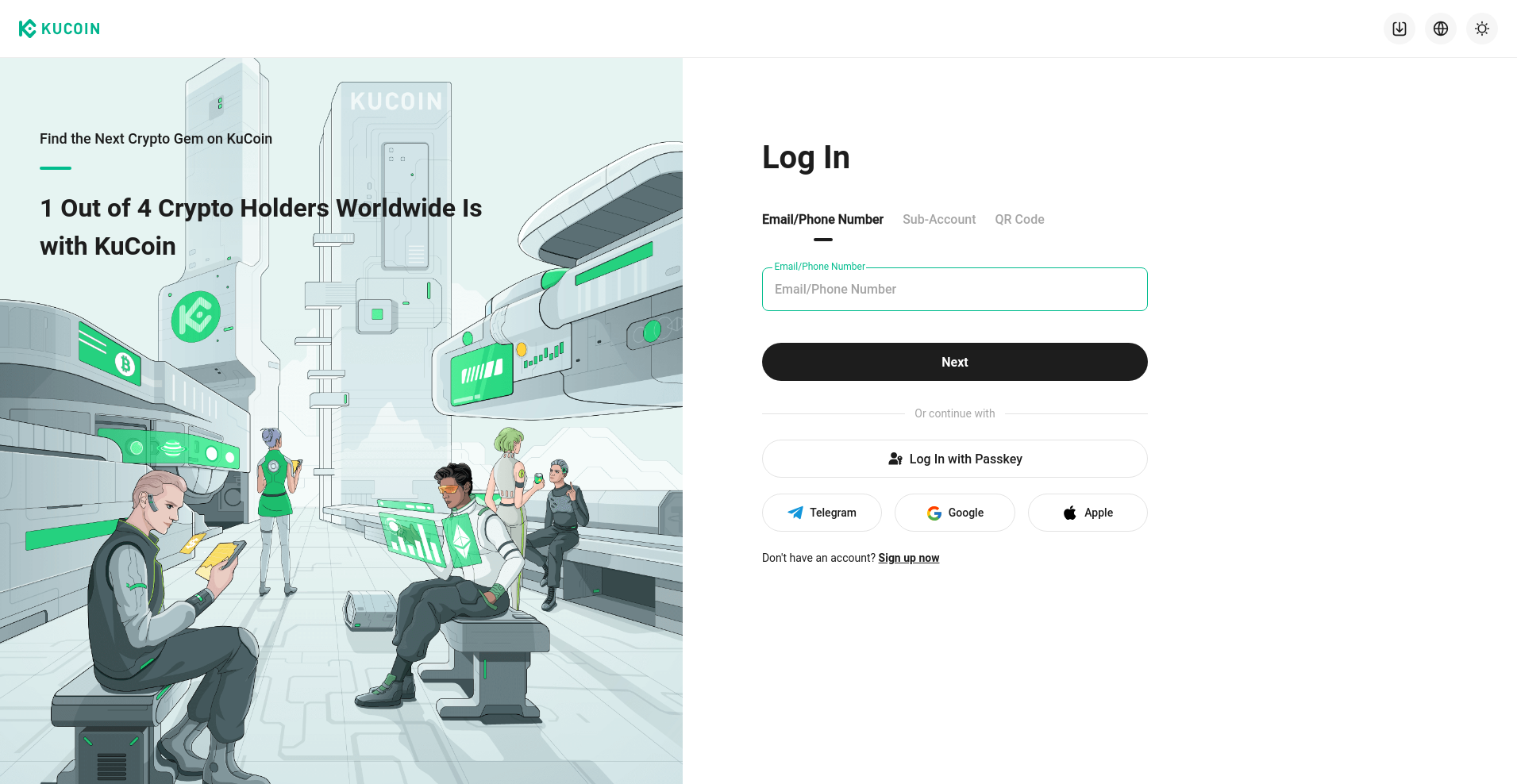KuCoin Token ($KCS) Review: A Data-Driven Examination of Its Legitimacy, Risks, and Potential

Project Overview
KuCoin Token, commonly known by its ticker $KCS, is the native utility token of the prominent KuCoin cryptocurrency exchange. Launched in 2017, KCS plays a central role within the KuCoin ecosystem, enabling various functions such as trading fee discounts, participation in token sales, staking, and rewards. The token operates across multiple blockchains, notably Ethereum and KuCoin’s own chain, leveraging an evolving suite of use cases aligned with the platform's growth strategies. You can learn more about the specific utilities and use cases of KCS within the broader KuCoin ecosystem.
Though KuCoin is among the world's larger exchanges with millions of users and significant trading volumes, an impartial assessment of KCS’s legitimacy and associated risks is essential for investors. This review synthesizes publicly available data, including recent audit reports, market performance, and platform disclosures, to present a comprehensive risk and legitimacy landscape for $KCS.
Team and Roadmap Evaluation
The KuCoin project is led by a seasoned executive team with publicly available profiles and extensive experience in finance and tech sectors, notably Co-Founder and CEO Changpeng Zhao’s reputation in the broader crypto industry. The team’s transparency, history of active development, and strategic milestones provide a baseline of credibility.
- 2017: Launch and initial token offering, establishing a solid foundation.
- 2018: Launch of the main platform, expansion into new markets, and initiation of staking features.
- 2020-2025: Major upgrades including launch of KuCoin’s own chain, chain upgrades, DeFi integration, and increasing use cases for KCS, emphasizing a strategic roadmap aligned with industry trends.
While the team’s public profiles and transparent roadmap suggest credible development, the lack of auditable technical audits specific to KCS’s smart contract code warrants caution. The platform's history indicates consistent delivery on milestones, but risks inherent to enterprise-led tokenomics and future regulatory changes remain.
Security and Trustworthiness
The analysis of KuCoin Token’s security is primarily based on the recent audit report from CER.live, a reputable blockchain security auditor. The audit targeted the KuCoin exchange platform as a whole, not exclusively the KCS token’s smart contracts or underlying code. However, the results provide insight into overall platform security, which indirectly influences the trustworthiness of associated token operations. Detailed insights into these operations can be found in articles discussing KuCoin's security measures and audits.
Key findings from the Cer.live audit include:
- Coverage: 100%, indicating comprehensive assessment of the platform’s security posture.
- Incidents: Complex security incidents were identified, though the platform has ongoing bug bounty programs to mitigate vulnerabilities.
- Audit Score and Rating: While specific smart contract vulnerabilities are not itemized, a rating of 7.35/10 suggests moderate security strength.
- Security Implications: Potential vulnerabilities in platform infrastructure or smart contract deployments could pose systemic risks, but no confirmed exploits or ongoing incidents were disclosed publicly.
Investors should interpret the audit's findings as an indication of ongoing security efforts, but recognize that smart contract-specific vulnerabilities, particularly in complex governance or staking contracts, require continual review. The absence of formal, decentralized code audits of KCS itself leaves some gaps in the trust assessment.
Tokenomics Breakdown
The tokenomics of $KCS underpin its economic viability and risk profile. The token has a capped max supply of 200 million tokens, with a descending schedule for issuance and burn mechanisms designed to create scarcity. These token burn mechanisms aim to reduce circulating supply over time.
- Total Supply: 142,543,917.85 KCS (current circulation).
- Max Supply: 200 million, with ongoing buyback and burn programs funded by KuCoin's net profits, targeting a 50% reduction to approximately 100 million KCS.
- Distribution: - 50% initial ICO allocation (public).
- 40% for founders and team, vested over 4 years.
- 10% for angel investors. - Utility: Users receive trading fee discounts, participate in token sales, stake for rewards, and benefit from buyback burns.
- Sustainability Risks: The reliance on profit-based buybacks exposes token value to exchange profitability, trade volume fluctuations, and regulatory influences. The burn mechanism, while deflationary, depends on consistent earnings and strategic execution.
This economic model reflects typical exchange token features, which can be subject to valuation volatility based on trading activity, platform success, and external market factors. The gradual phase-out of token issuance and buyback program aim to mitigate inflationary pressures, but the system's long-term sustainability hinges on platform performance and regulatory clarity.
ecosystem and Development Activity
The KuCoin ecosystem demonstrates active development, with regular platform upgrades, new products (like KuCoin Wallet, DeFi integrations), and strategic partnerships. Notably, project health is supported by the continuous addition of new tokens, partnership announcements, and user incentives.
Market activity data shows robust trading volumes (~8 billion USDT daily), suggesting high engagement levels. Such liquidity and user volume support the utility of KCS, especially as a fee discount and participation token. However, development progress is partly marketing-driven, with notable announcements that periodically influence market sentiment. The platform’s transparency in disseminating updates and audits adds to its credibility, though external validation (e.g., independent smart contract audits) remains a prudent step for risk mitigation.
Reviewing the Terms and Conditions
KuCoin’s official documentation emphasizes standard legal safeguards, including full terms of use, privacy policies, and compliance policies such as AML and CFT. Noteworthy is their dedicated whistleblower contact ([email protected]), which underscores a willingness to address misconduct—an important trust signal. Understanding these policies is part of assessing the potential regulatory risks and compliance for exchange tokens.
No particular clauses conflict with industry norms; however, investors should remain cognizant of potential risks related to KCS's utility dependence on platform success, evolving regulation of exchange tokens, and the possibility of delistings or regulatory crackdowns. The platform’s compliance and security frameworks, as publicly outlined, provide a baseline for legitimacy, but transparency in smart contract security remains a critical area for ongoing trust assessment.
Final Analysis: The Investment Case for KuCoin Token ($KCS)
KuCoin Token ($KCS) presents an interesting case as an exchange-native utility token with a credible development history, active ecosystem, and deflationary mechanisms. Its legitimacy is reinforced by the exchange’s large user base, transparent roadmap, and ongoing security audits, although some vulnerabilities remain unverified through independent smart contract audits.
However, investors face notable risks: the token’s value heavily depends on KuCoin’s platform performance, trading volume, and profit margins, making it susceptible to regulatory, market, and operational risks. The burn mechanism and long-term scarcity strategy bolster its potential, but inherent exchange reliance introduces systemic risk linked to platform health.
In conclusion, KCS holds legitimate qualities as part of a major exchange ecosystem, but its valuation and long-term sustainability necessitate continuous monitoring of platform security, regulatory developments, and market conditions. As always, informed investors should weigh these factors carefully before considering an investment.

Amanda Harris
Technical Security Educator
Security professional passionate about the "human firewall." I translate complex crypto threats into simple, actionable security habits for everyday users.
Similar Projects
-
Exact Agent
Review of Exact Agent: Is This Crypto Project a Scam or Legit? | Crypto Scam Checker & Review
-
Bazaars.io
In-Depth Review of Bazaars.io: Crypto Project Scam Checker & Market Analysis
-
Propchain
Propchain Review — Crypto Scam Checker & Project Scam Checker | Is Propchain Legit?
-
NoCap (NOCAP)
Review of NoCap (NOCAP): Is This Cryptocurrency Project a Scam or Legit? Crypto Scam Checker & Review
-
SEVO-X
SEVO-X Review: Scam or Legit Crypto? Uncover The Truth